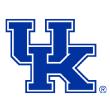Charlie Creme breaks down the winners and losers after the selection committee revealed the women's NCAA tournament bracket.
WINNERS
 1. Connecticut. When you have won 69 straight games and three consecutive national championships, going onto the winners' list might seem redundant. But not only are the Huskies the big favorite to hoist the trophy in Indianapolis, their road to get there looks to be the easiest of all the No. 1 seeds. All of the others are paired with conference champions -- regular season or tournament -- on the No. 2 seed line. You have to go all the way to the No. 7 seed in Bridgeport, with BYU, before there is a league champion in UConn's way.
1. Connecticut. When you have won 69 straight games and three consecutive national championships, going onto the winners' list might seem redundant. But not only are the Huskies the big favorite to hoist the trophy in Indianapolis, their road to get there looks to be the easiest of all the No. 1 seeds. All of the others are paired with conference champions -- regular season or tournament -- on the No. 2 seed line. You have to go all the way to the No. 7 seed in Bridgeport, with BYU, before there is a league champion in UConn's way.
 2. Mississippi State. The No. 5-seeded Bulldogs were not considered a top-16 team by the committee. They were just outside that group of teams. Mississippi State will be hosting anyway. Michigan State, the No. 4 seed in the Bridgeport region with the Bulldogs, can't host because the Breslin Center is being used for a high school tournament. That means those duties fall to Mississippi State, and the fans in Starkville that have been loyal all season get rewarded after all.
2. Mississippi State. The No. 5-seeded Bulldogs were not considered a top-16 team by the committee. They were just outside that group of teams. Mississippi State will be hosting anyway. Michigan State, the No. 4 seed in the Bridgeport region with the Bulldogs, can't host because the Breslin Center is being used for a high school tournament. That means those duties fall to Mississippi State, and the fans in Starkville that have been loyal all season get rewarded after all.
 3. Ivy League. For the first time ever, the Ivy received an at-large bid when Princeton was given one of the last two spots in the field. Ironically, this comes one year after many felt a 30-0 Tigers team was underseeded at No. 8 and one year before the Ivy League goes to a four-team tournament -- and not the current regular-season champ -- to decide its automatic berth in the NCAA tournament.
3. Ivy League. For the first time ever, the Ivy received an at-large bid when Princeton was given one of the last two spots in the field. Ironically, this comes one year after many felt a 30-0 Tigers team was underseeded at No. 8 and one year before the Ivy League goes to a four-team tournament -- and not the current regular-season champ -- to decide its automatic berth in the NCAA tournament.
 4. Kentucky. The Wildcats received the No. 3 seed in the Lexington region, which means Kentucky players could play their way into the Final Four and sleep in their dorm rooms every night during the entire run. Kentucky's first two games will be at Memorial Coliseum. Assuming they survive UNC Asheville and the Oklahoma-Purdue winner, the Wildcats then move on to Rupp Arena for the regionals. The top two seeds, Notre Dame and Maryland, each of which won regular-season and conference-tournament titles, might have to win a road game to get to the Final Four.
4. Kentucky. The Wildcats received the No. 3 seed in the Lexington region, which means Kentucky players could play their way into the Final Four and sleep in their dorm rooms every night during the entire run. Kentucky's first two games will be at Memorial Coliseum. Assuming they survive UNC Asheville and the Oklahoma-Purdue winner, the Wildcats then move on to Rupp Arena for the regionals. The top two seeds, Notre Dame and Maryland, each of which won regular-season and conference-tournament titles, might have to win a road game to get to the Final Four.
 5. Pac-12. The No. 1 RPI conference only got five teams into the field, but four of them were among the top-16 teams and will be hosting. As expected, Oregon State is a No. 2 seed. Somewhat surprisingly, Arizona State earned a No. 2 seed, as did UCLA. Stanford earned a 4-seed. The coaches in the league made a concerted effort to schedule stronger nonconference opponents to get each team's RPI numbers up. The strategy paid off by snaring a quarter of the top seeds.
5. Pac-12. The No. 1 RPI conference only got five teams into the field, but four of them were among the top-16 teams and will be hosting. As expected, Oregon State is a No. 2 seed. Somewhat surprisingly, Arizona State earned a No. 2 seed, as did UCLA. Stanford earned a 4-seed. The coaches in the league made a concerted effort to schedule stronger nonconference opponents to get each team's RPI numbers up. The strategy paid off by snaring a quarter of the top seeds.
 6. Tempe, Arizona. Not only do the fans in the desert get their hometown Arizona State Sun Devils, but Tennessee, as a No. 7 seed, comes to town. The Tennessee-Green Bay matchup is one of the most intriguing of the opening round, and Tempe gets it.
6. Tempe, Arizona. Not only do the fans in the desert get their hometown Arizona State Sun Devils, but Tennessee, as a No. 7 seed, comes to town. The Tennessee-Green Bay matchup is one of the most intriguing of the opening round, and Tempe gets it.
LOSERS
 1. Tobacco Road. For the first time since 1988, when only 40 teams were chosen for the NCAA women's tournament, we have a field without Duke, North Carolina or NC State. The Blue Devils suffered throughout an injury-plagued season and fell out of contention late. The Tar Heels, feeling the aftermath of an NCAA investigation and player defections, finished 14-18. The Wolfpack were the closest to keeping the streak alive, but they were among the first four teams out.
1. Tobacco Road. For the first time since 1988, when only 40 teams were chosen for the NCAA women's tournament, we have a field without Duke, North Carolina or NC State. The Blue Devils suffered throughout an injury-plagued season and fell out of contention late. The Tar Heels, feeling the aftermath of an NCAA investigation and player defections, finished 14-18. The Wolfpack were the closest to keeping the streak alive, but they were among the first four teams out.
 2. Washington. The downside of the Pac-12 having four teams among the top-four seeds is the situation for the Huskies. Because of bracketing rules, the committee was limited as to where it could send Washington. Certainly, Mike Neighbors is happy about being in the tournament, but his team has to travel across the country to College Park, Maryland, for its opening two games. Only Miami, which is headed to Stanford, has farther to go.
2. Washington. The downside of the Pac-12 having four teams among the top-four seeds is the situation for the Huskies. Because of bracketing rules, the committee was limited as to where it could send Washington. Certainly, Mike Neighbors is happy about being in the tournament, but his team has to travel across the country to College Park, Maryland, for its opening two games. Only Miami, which is headed to Stanford, has farther to go.
 3. Kim Mulkey. Twice in the Brittney Griner era, the Lady Bears were upset before reaching the Final Four. Once, it was by Texas A&M in 2011. Two years later, Louisville stunned a heavily favored Baylor. Who might Kim Mulkey have to beat in consecutive games to get to the Final Four this year? That's right, Texas A&M and Louisville. The Aggies are a potential Sweet 16 foe, and the Cardinals could await in the Elite Eight.
3. Kim Mulkey. Twice in the Brittney Griner era, the Lady Bears were upset before reaching the Final Four. Once, it was by Texas A&M in 2011. Two years later, Louisville stunned a heavily favored Baylor. Who might Kim Mulkey have to beat in consecutive games to get to the Final Four this year? That's right, Texas A&M and Louisville. The Aggies are a potential Sweet 16 foe, and the Cardinals could await in the Elite Eight.
 4. DePaul. The Blue Demons may have been an NCAA tournament host had they won the Big East tourney they were hosting. Instead, they went out in the semifinals to eventual champ St. John's and ended up a No. 6 seed. Still worse, DePaul got paired with No. 3 Louisville, one of the country's best teams in the second half of the season, playing at home.
4. DePaul. The Blue Demons may have been an NCAA tournament host had they won the Big East tourney they were hosting. Instead, they went out in the semifinals to eventual champ St. John's and ended up a No. 6 seed. Still worse, DePaul got paired with No. 3 Louisville, one of the country's best teams in the second half of the season, playing at home.
 5. Green Bay. Last year, the Phoenix played second fiddle when they drew unbeaten Princeton in a first-round game. This year, all eyes will be focused on Tennessee when the two take the court. Green Bay has been as consistent a program as the game has. When will it get to be first-billing?
5. Green Bay. Last year, the Phoenix played second fiddle when they drew unbeaten Princeton in a first-round game. This year, all eyes will be focused on Tennessee when the two take the court. Green Bay has been as consistent a program as the game has. When will it get to be first-billing?
